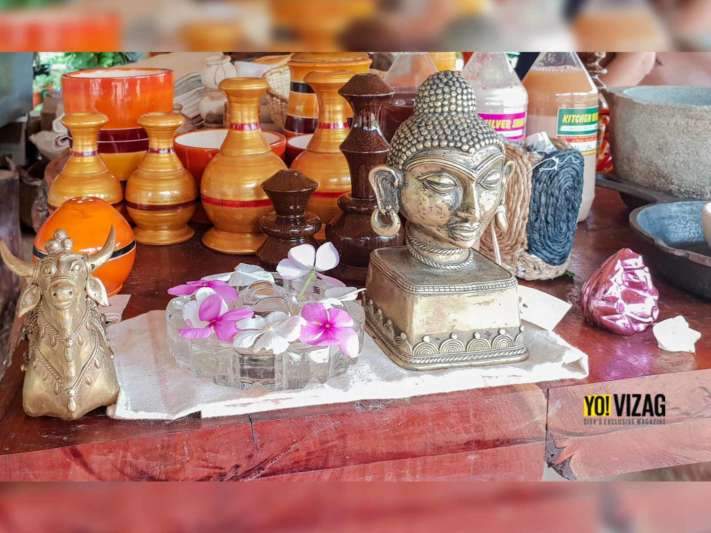
A short drive away from the city’s pollution and traffic takes you to the Sankalpa Art Village and Nursery, a destination which promotes everything eco-friendly. Jaya Siva Murty brings you the story.
And that’s not all. The art village also promotes eco-friendly Etikoppaka toys and wood art which is done using the locally available palm-wood and coconut shells. Terracotta vessels are crafted here in delightfully new shapes and utilities. Products made from healthy metals and alloys are brought in from Coimbatore along with herbal cleaning products from Simhachalam, minor millets from Girijan regions and finely woven mats from West Bengal. As we see the artisan working on smoothening the coconut shells, the end products are not just pretty but have utilitarian values too.
The response to their range of completely handmade products is however good. With sales taking place through handloom shandies that they would participate in, they now sell at the venue or online through students. “People who understand the value of natural products, come to the village to pick up these products. It’s good for health with natural dyes reducing the instances of skin diseases and promoting health.”
Employing 30 people in the nursery, six of them are employed at the art village as well. Besides them, Sankalpa also sends yarn and gets weaving done at a village in West Godavari. A few terracotta products are also made by women of an old age home, to help generate income. With students from the city coming to them for internships, they regularly conduct sales and workshops on weaving and pottery as well. While their work is a source of happiness for this family, they hope that the handmade crafts do not disappear into oblivion. The vision of the Sankalpa Art Village is a beautiful and sustainable one, as it breathes life to the dying traditional crafts of the region.
People who understand the value of natural products, come to the village to pick up these products.
This post was last modified on 09/09/2018 12:50 pm
The Vizag City Police, on 5 May 2024, conducted a Property Recovery Mela for April,…
Mango, the king of fruits, has arrived in the Visakhapatnam markets in different varieties to…
The postal ballot process in Visakhapatnam will begin on Sunday and all arrangements for it…
The Simhachalam temple will celebrate the Chandanotsavam festival, known for its 'Nijaroopa Darshan' on 10…
Prime Minister Narendra Modi is scheduled to make another visit to Andhra Pradesh to rally…
Accompanied by Sri Bharat, the son-in-law and TDP-BJP-JSP combine candidate for the Visakhapatnam Lok Sabha…
Leave a Comment